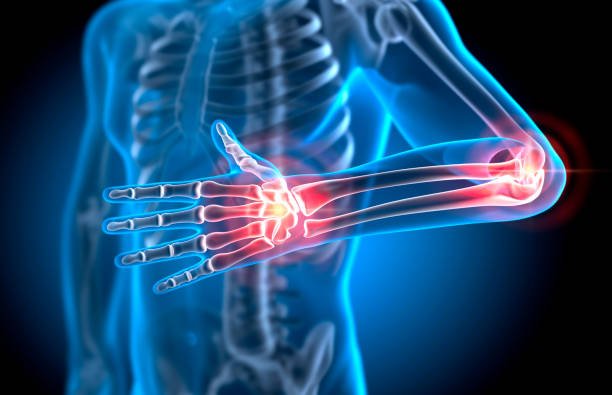Health: Understanding Arthritis
Arthritis might be responsible for joint pain and swelling as well as knee stiffness experienced post-sitting.
It's estimated that about a third of adults who are within the age range of 18 to 64 suffer from arthritis but this figure might actually be higher considering several people avoid getting proper treatment. Discover what exactly arthritis is and what sensation it brings to your body. A comprehensive guide on everything needed can be found here;
What Is Arthritis?
Joint inflammation is commonly referred to as arthritis and there exist numerous forms affecting people across all age groups. The presence of different types of Arthritis including Osteoarthritis, Rheumatoid Arthritis & Psoriasis Arthritis very often leads to confusion among patients with regards to understanding the symptoms & best possible remedies.
What Does Arthritis Feel Like?
The ache associated with joints may occur in different areas like fingertips or kneecap feeling this one symptom can be a sign of arthritis.
Pain caused by arthritis is not constant and varies in intensity depending on the person, this type of discomfort could take place while sitting and moving alike.
The presence of fluid buildup may cause noticeable swelling in the arthritic knee.
The inflammation could also result in warm red patches surrounding the affected area causing difficulties related to mobility along with stiffness notably in mornings or following prolonged sitting.
Classic signs of arthritis include joint stiffness, while signs of arthritis may also include joint stiffness resulting from continuous sitting in cars or work desks.
Crepitus is the term given to describe the sound of grinding or popping in your joints and it could indicate that you have arthritis.
What Does Arthritis Look Like?
It takes more than just looking at a joint to accurately diagnose arthritis, but the alignment and appearance of bones or joints may evolve into worse conditions as arthritis advances among those who suffer from severe cases.
Changes in bone structure due to post-traumatic arthritis may lead to visual discrepancies between an affected knee and a healthy one.
How To Get Test For Arthritis?
Through the use of CT scans and MRIs in testing for arthritis it is possible to detect joint damage, however, the extent of actual joint damage does not always match up with how much pain one feels.
Take into account a person who suffers from mild arthritis in their knee and this creates major problems for them causing pains and struggles while standing or sitting down.
You may see another patient who is considerably worsened when coming to your office, but their joints are actually working very well despite visible signs of significant cartilage loss that results in bones grinding together.
How to Get Rid of Arthritis In Fingers
Finger joint arthritis affects many people over the age of 50, even though there is no cure for arthritis in fingers yet patients can still benefit from treatment which concentrates on preservation of function while providing relief from discomfort through personalized care that caters specifically to their level of discomfort.
Anti-inflammatory medication like ibuprofen and naproxen sodium are frequently prescribed to relieve the symptoms of arthritis in fingers. Other forms of treatment include injecting cortisone or hyaluronic acid alongside physical therapy sessions and surgical intervention.
Hand exercises such as fist stretches and fingertip touches are beneficial for people suffering from finger arthritis since they help to alleviate discomfort and increase suppleness.
How Is Arthritis Diagnosed?
Your doctor will start the diagnosis of arthritis by asking for your medical history and talking about any symptoms. Examining a patient's past medical records helps us gather insights about their current physical state which includes information on various aspects such as smoking or stress levels.
When you experience arthritis symptoms along with their duration and which joints they affect are some important topics that your doctor may want to talk about. You must detail the level of pain experienced along with any accompanying signs like swelling and redness in addition to noting whether using over-the-counter medication or exercising has provided relief.
When you go in for a physical exam, expect the doctor to check your blood pressure level along with listening to your heart rate. Additionally, they will inspect your joints, looking out for any signs of swelling or redness before moving each one around.If they decide so they may perform tests like MRI or X-ray scans together with a nerve test to identify any adverse influence on nerve electric signals. The examination of joint spaces through x-ray scans is utilized by physicians for diagnosing arthritis since cartilage is not visible on X-rays.
What Is Psoriatic Arthritis?
Psoriatic arthritis is generally characterized by inflammation in both the joints and skin.
Painful arthritis diseases such as psoriatic arthritis fall under autoimmune conditions as a result of harmful attack from our own immune system on both skin or joints leading to significant discomfort and inflammation.
Psoriatic arthritis has the potential to grow quickly and it's considered one systemic aspect caused by psoriasis. Not receiving timely treatment could result in serious injury that cannot be reversed affecting both the bones as well as the cartilage.
The probability of commencing suitable medicine which safeguards both joint functionality and quality of life increases if early diagnosis takes place.
The followings are symptoms of psoriatic arthritis;
Usually occurring on areas such as knees or scalp are painful red patches accompanied by itchy skin and an accumulation of white dead skin cells.
The occurrence of inflammation leading to wrist or ankle swelling accompanied by finger or knee pain can be a sign.
Lifting of nails from their beds can be a result of cracking or developing white spots.
Areas where tendons or ligaments join with bone such as at the back of the heel can become inflamed leading to swelling.
It's common to feel fatigued and have a mild fever if you're dealing with psoriatic arthritis.

Interesting post 👍
Keep up the good work.